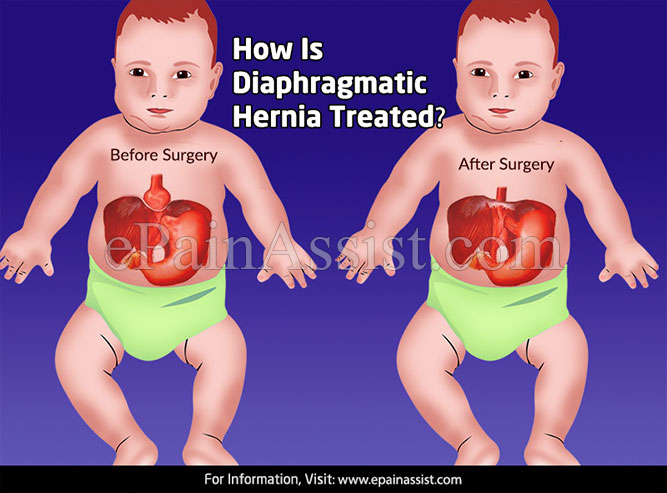What Is Diaphragmatic Hernia?
The diaphragm is a muscular structure which is dome shaped and acts as a barrier between the chest and the abdominal cavity. The diaphragm separates the heart from the organs in the abdomen like the kidneys, liver, spleen, stomach, and intestines. Diaphragmatic Hernia is a condition in which there is an abnormal opening in the diaphragm which results in one or more abdominal structures to protrude through this opening into the chest cavity resulting in a variety of symptoms.
Diaphragmatic Hernia can be congenital or acquired. This is an emergent medical condition and requires immediate medical treatment to prevent complications which may in some cases be life threatening that may arise due to Diaphragmatic Hernia.
What Causes Diaphragmatic Hernia?
Congenital Diaphragmatic Hernia is caused due to an abnormality during fetal development resulting in an underdeveloped or abnormally developed diaphragm. This defect in the diaphragm allows the abdominal organs to move up into the chest cavity and occupy the space that usually is taken by the lungs. This causes the lungs to remain underdeveloped. In most of the cases of Diaphragmatic Hernia, only one lung is affected.
The acquired form of it occurs as a result of a blunt trauma like a gunshot or a stab wound to the chest. Road accidents by far are the major cause of acquired form. A surgical procedure of the chest or the abdomen may also result in acquired form.
What Are The Symptoms of Diaphragmatic Hernia?
Depending on the size of the defect, the cause, and the organs that protrude through the opening there may be a variety of symptoms caused due to a Diaphragmatic Hernia. Some of the symptoms of Diaphragmatic Hernia are:
- Problems Breathing: This may be severe and is caused as a result of underdeveloped lungs.
- Tachypnea: This may occur when the lungs in order to prove more oxygen to the body may work that much faster resulting in tachypnea.
- Bluish Discoloration of The Skin: This is as a result of the underdeveloped lungs unable to provide enough oxygen to the body which results in bluish discoloration of the skin.
In some cases, due to the intestines and other organs moving up towards the diaphragm the bowel sounds may be heard in the chest area, which is also a significant symptom of it.
Palpation of the abdomen will result in lack of fullness that is normally seen in normal circumstances. This is as a result of the organs moving up towards the chest cavity due to it.
How Is Diaphragmatic Hernia Diagnosed?
Congenital Diaphragmatic Hernia can be diagnosed before the birth of the child by doing an ultrasound of the abdomen of the mother. Additionally, there will be increased levels of amniotic fluid within the uterus which will also indicate towards a diagnosis of it.
Once the child is born he or she will have abnormal chest movements, have problems breathing, will be cyanotic, will have absent breath sounds on one side, and have bowel sounds heard from the chest all suggesting the possibility of a Diaphragmatic Hernia.
Additionally, the physician may perform the following tests to confirmatively diagnose it. These tests are radiological studies in the form of x-ray of the chest and abdominal area which will clearly show it.
An ultrasound of the abdomen will be conducted which will also show abnormal positioning of the organs in the abdominal cavity, and advanced imaging in the form of a CT or MRI scan of the chest and abdomen which will clearly show a defect in the diaphragm and protrusion of the abdominal organs within the chest confirming the diagnosis of Diaphragmatic Hernia.

How Is Diaphragmatic Hernia Treated?
As stated, Diaphragmatic Hernia in both congenital and acquired forms is an emergent condition and requires immediate medical attention. Surgery is the front line treatment for it.
The procedure will be done to remove the abdominal organs from the chest area and place them back into their normal anatomical positions. Once that is done then the opening in the diaphragm is repaired.
The surgery for congenital Diaphragmatic Hernia may be done as early as 72 hours after the birth of the child but the timing of surgery varies and depends on the severity of the condition.
Initially, the patient may be given medication to increase the oxygen levels in the body and the child may be kept on mechanical ventilation to assist in breathing. Once the baby is stabilized then preparations for surgery begins for treatment of Diaphragmatic Hernia.
